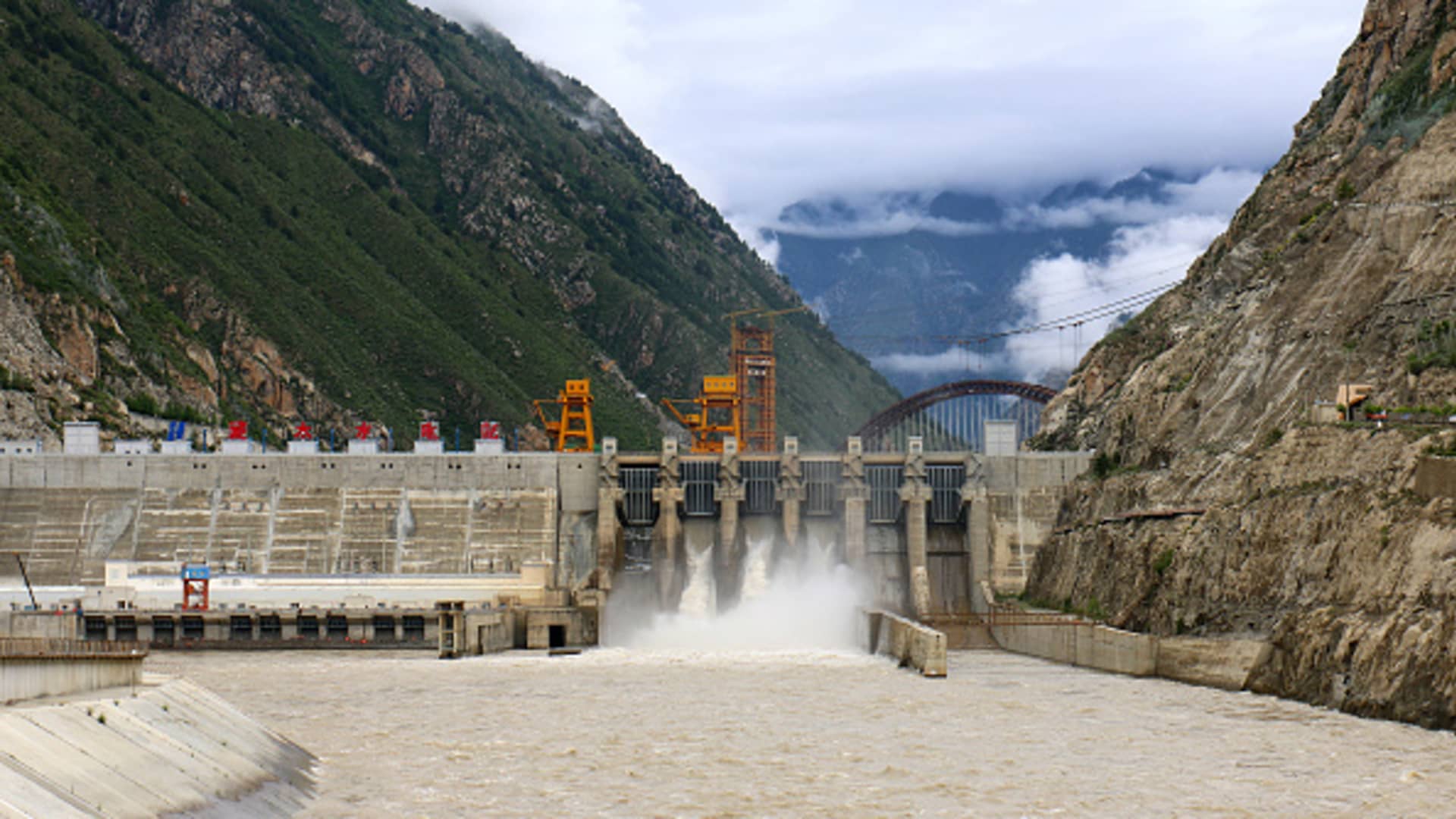China has kicked off construction on the world’s largest hydropower dam, and analysts expect the colossal undertaking to be a huge boost for hydro-equipment and materials suppliers. Chinese Premier Li Qiang launched the construction of the mega-dam, located on the eastern rim of the Tibetan plateau, that is expected to produce 300 billion kilowatt-hours of electricity annually — three times the size of the Three Gorges Dam — the world’s largest source of hydroelectric power. That capacity would be equal to 21% of China’s entire hydropower generation last year and around 2% of the country’s total power generation, according to Pierre Lau, head of Asia-Pacific utilities research at Citi. Lau named Dongfang Electric, a leading hydropower equipment manufacturer in China, as a major beneficiary of the surge in new orders from the dam’s construction. With total investment for the Yarlung Zangbo hydropower project estimated at 1.2 trillion yuan ($167.8 billion) — around five times that of the Three Gorges Project — total bids for power equipment could hit as much as 120 billion yuan, Lau said. Dongfang, which enjoyed a 45% share in the conventional hydropower market, could rake in as much as 54 billion yuan from the new project, according to Lau. That would equate to 77% of the company’s entire revenue in 2024, he said, although the revenue recognition may start at least five years later. Dongfang Electric saw its shares listed in Shanghai jump 10% — hitting their upper limit — on the three consecutive trading days this week. Its shares in Hong Kong soared over 65% on Monday after the dam’s ground-breaking on Saturday — shares traded over 9% lower at 22.9 Hong Kong dollars ($2.9) Wednesday after sliding 2.8% Tuesday. The company is also better-positioned thanks to its hydropower unit production and research base in the city of Linzhi in Tibet, allowing it to develop customized equipment for the high-drop environment of the Yarlung Zangbo river, Lau said. Albert Miao, head of China energy transition and commodities research at Macquarie Capital upgraded the target price for Dongfang Electric’s H-shares by 27% to HK$14.10, and A-shares by 17% to 25.50 yuan, with “outperform” ratings, citing “stronger than expected thermal power approvals and build-ups into 2030.” Other top names for investors to watch include grid equipment makers Sieyuan Electric, Henan Pinggao Electric and XJ Electric, according to Lau, as the project will likely prompt a surge in demand for ultra-high voltage transmission lines and switchgears. Surging demand for cement, explosives Besides the hydropower infrastructure and equipment suppliers, analysts suggest construction of the colossal project would also benefit companies involved in production of cement and civil explosive products. Equity brokerage firm CGS International expects cement supplier Xizang Tianlu to be a major beneficiary, as the project is estimated to use more than 40 million cubic meters of concrete, translating into over 16 million tons of cement, or 1 million ton annually. “Tianlu, with all its capacity in Tibet, stands to benefit most,” Macquarie’s Miao said, while other players derived only a small share of revenue from Tibet. CGS International also pointed to Huaxin Cement and Anhui Conch Cement , both listed in Hong Kong as well as Shanghai, as potential winners as they could help supplement supply if Tibet’s cement production falls short. Gaozheng Explosives, which has garnered around 90% of share in Tibet’s civil explosives market, could reap a majority of new orders for the dam, Miao said, as it may be “unfeasible” for players outside the region to transport explosives due to strict regulation and high costs. In a filing on the Shenzhen stock exchange Tuesday, Zhejiang Jindun Fans , a ventilation system equipment supplier, warned of “abnormal fluctuation” in the trading of its stocks. While construction of the hydropower dam had kicked off, respective bidding process had not started, the company said, cautioning investors to invest “rationally.” The stock soared 11% on Monday, followed by a 20% surge on Tuesday to close at 16.08 yuan ($2.24). The rally in related stocks this week was likely driven by increased visibility into the mega-dam project, according to Kai Wang, Asia equity market strategist at Morningstar. “Much of the loans and planning had already been approved back in December, but it wasn’t until this past week that we saw the full scale — how big it would be, how much cement it would require,” Wang added. He also highlighted Anhui Conch Cement as a preferred pick following the launch of the mega-dam, noting the stock has long been among the firm’s top recommendations. The project could renew investors’ interest in the name, Wang said, especially as it stands to benefit from Beijing’s recent “anti-involution” policies targeting aggressive price undercutting. He maintained the price target for the Hong Kong-listed stock at HK$26. The stock last traded at HK$24.1 Wednesday. It might take up to 10 years for the dam project to be completed in phases, according to a team of economists at Nomura, who predicted the boost to the economic growth to be “most visible” in the first couple of years, leading to a gain of 0.1 percentage point in GDP growth.





